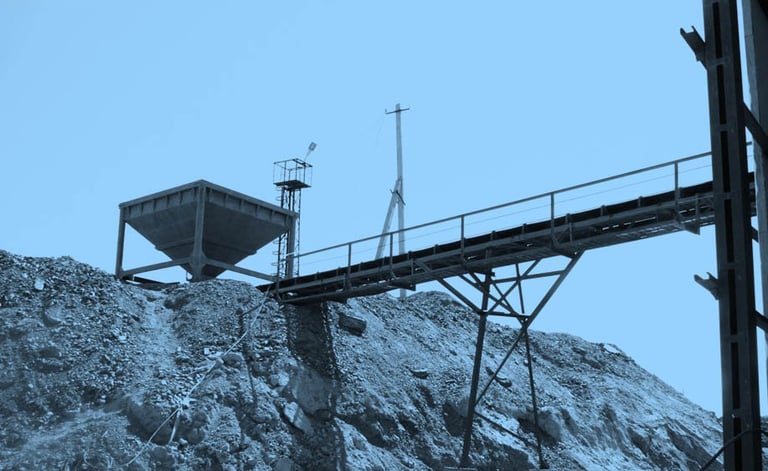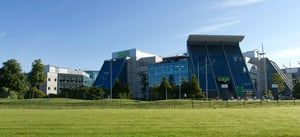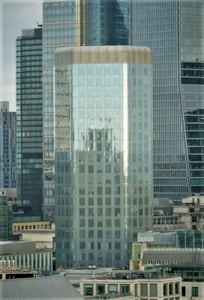Ferro-Alloy Resources Ltd (LON:FAR) Chief Executive officer Nick Bridgen caught up with DirectorsTalk for an exclusive interview to discuss why they are producing molybdenum, the financial significance and what investors should be looking out for in the coming months.
Q1: Nick, Ferro-Alloy Resources is a vanadium producer, can you explain why you’re going to be making molybdenum?
A1: Well, the main raw material that we buy, that contains the vanadium, comes from oil refining, catalyst to use for the demetallisation of crude oil in a refinery these catalysts collect vanadium and the molybdenum. There’s more vanadium than molybdenum and up until now, we’ve been producing the vanadium from these materials but we haven’t been recovering the molybdenum.
Now, the grade of vanadium in these materials depends on where they come from and how much pre-treatment they’ve had, typically they range from 10% to say 25% v2O5, that’s vanadium pentoxide and a typical moly grade will be rather less, probably around 4%.
Obviously, if you can recover it as we now can, that’s just incremental revenue with very little additional costs so it has a disproportional effect on the bottom line so that’s why we’re do it, it increases our cashflow.
Q2: So, how significant is this then for you financially?
A2: It’s very significant to the existing operation and, I have to say, the existing operation is relatively small compared with the project, the Balasausqandiq project that we’re developing, it’s that project that we’re in business for. This current operation is an expanded version of the original pilot plant.
It’s very significant to us in that it gives us a cashflow, keeps the people occupied, we have a lot of expertise, we’re getting more and more skilled at what we do and getting more and more knowledge of the vanadium market and how to operate in the local environment.
So, the existing operation is very good, unlike most other junior companies, we don’t have a black hole in front of us, we don’t have a cash burn rate because we’re an operation, we’re existing.
That incremental revenue, when prices are low as they are now, the vanadium prices are very volatile, when prices are low, it makes a big difference, it switches us from breaking even to a significant earner. That increasing grade, remember it comes without any real material costs, it’s simply increase in revenue for almost no cost of sales, there’s a little bit of a recovery cost, the materials are brought into solution anyway to get the vanadium out so there’s just a little bit of additional recovery costs on the calcium molybdate.
Roughly 80% of revenue flows through to the bottom line so it’s highly significant to our existing operation.
Q3: What should investors be looking out for from Ferro-Alloy Resources in terms of news flow over the coming months?
A3: We’ve got a busy time over the next, roughly six months, the big thing that will make life an awful lot easier for us is the connection to the local power supply.
We’re getting very poor quality power at the end of a long reticulated line with wooden poles at the moment and that’s causing a lot of operational problems as I’ve said in many of our releases, but we’re well on the way now to connecting onto a high but high voltage line. That will, at a stroke, get rid of 90% of our operational difficulties and let us use the existing capacity more efficiently.
That will increase our average run rate significantly itself, but we’ve got several other bits of kit coming on stream over the next few months. The first one will be the converter so that we convert our AMV – ammonia metavanadate – production into vanadium pentoxide, that gets rid of a discount and increases the number of customers that we can sell to so that will increase our revenue.
Very significantly, around six months’ time, we should be bringing on stream our electric arc furnace and that really completes our expansion plan that we announced when we listed for this plant. It should get us up to 1500 tons a year of V2O5 production and makes the whole thing a lot more profitable because we’ve got the same overheads, a lot of the same costs but we just have more than double existing production. Moreover, we’ll be able to make ferro vanadium which is a higher level up the value chain compared with existing AMV and vanadium pentoxide that we’ll be making soon.
So, that will really be the completion of this existing plant and, given a fair wind on vanadium prices, that’s what we expect to be able to make very significant profits just from this operation and makes funding the expansion of the main project very much easier.
Of course, talking of the main project, that is the reason we’re in business, that’s what gives us our $2 billion of NPV and the feasibility study is what we’re working on so very difficult to be exact with the timing of feasibility studies, but over the next six months we should have some significant news flow.










































